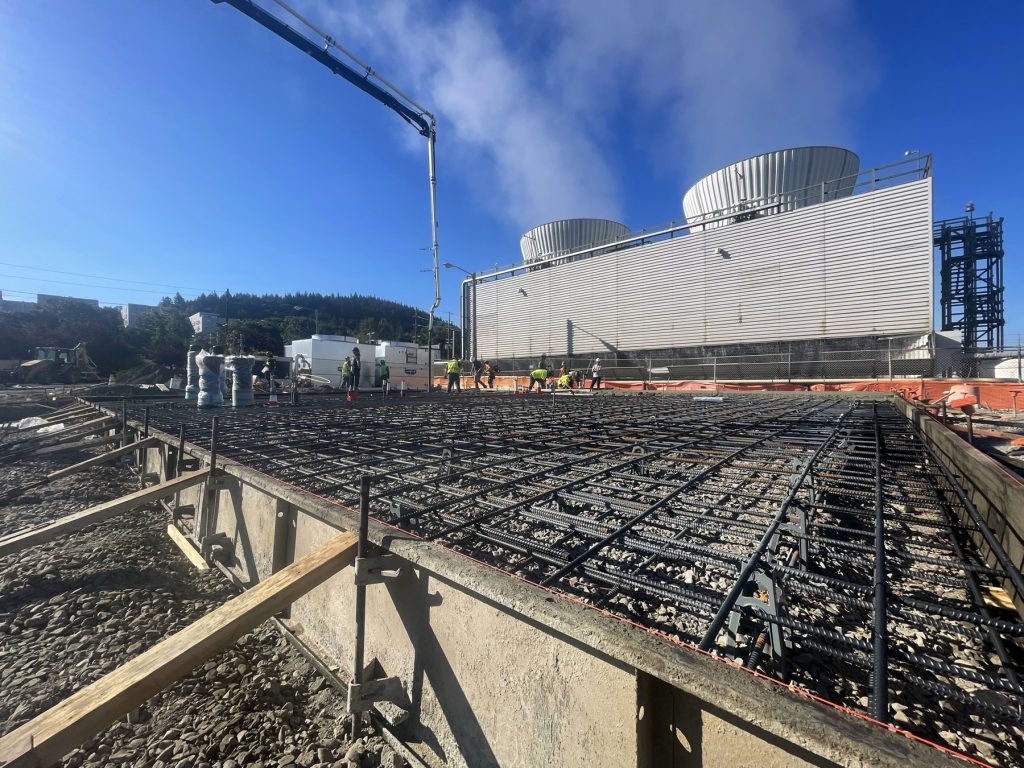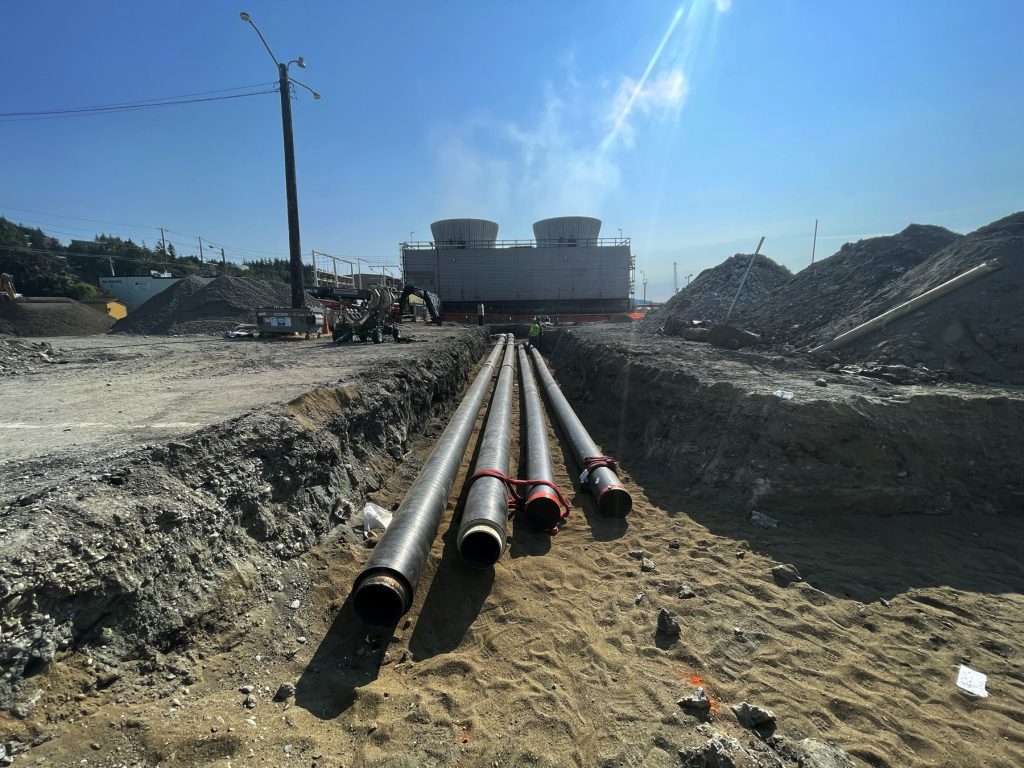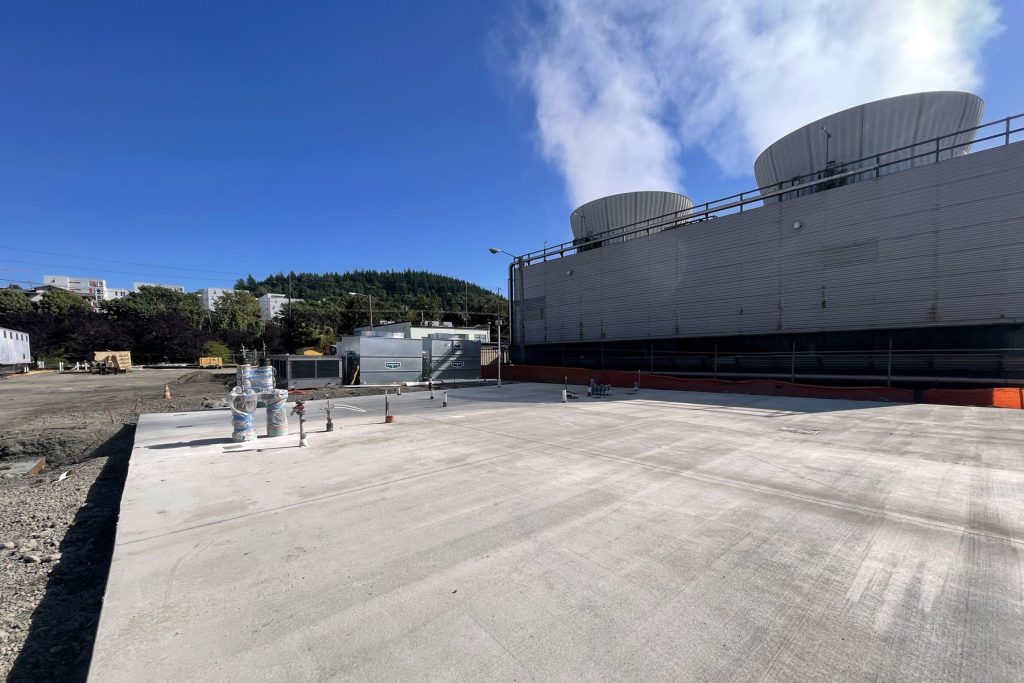As the former Georgia-Pacific pulp and tissue mill site continues to be redeveloped along the Bellingham Bay waterfront, a partnership between Puget Sound Energy and Corix is ensuring the burgeoning neighborhood’s future is energy-efficient.
In conjunction with PSE and the Port of Bellingham, Corix has developed a new low-carbon energy system that will be among North America’s first district energy systems to meet the 2021 Washington State Energy Code standard.
Corix will utilize waste heat from PSE’s existing Encogen Generating Station, located along Cornwall Avenue, to provide efficient heating and cooling for 1.6 million square-feet of mixed use commercial-residential development coming to the waterfront.

Development includes waterfront condominiums — the first buildings to connect to the system by the end of the year — along with affordable housing units, a hotel and conference center, and additional residential and commercial space.
“We’ve been working on assessing and planning for this since 2018,” says Travis Hickford-Kulak, Senior Vice President of Corix’s Canadian utilities. The company assessed many types of low-carbon technologies to help reduce the carbon footprint of the waterfront as it’s built out over time. PSE’s Encogen station, which has existed since before Georgia-Pacific closed, provided an obvious solution.
By utilizing Encogen’s cooling tower basin water for heat recovery, Corix will run that byproduct waste heat through a series of heat exchangers and heat pumps and other low-carbon technologies to generate heat to the newly-constructed buildings.

How It Will Work
The Encogen station relies on a combination of gas- and steam-powered turbines, says Chris Clark, PSE’s operations and maintenance supervisor for the station.
The three gas turbines each produce exhaust heat of about 1,200 degrees Fahrenheit. That exhaust, Clark explains, goes to a heat recovery steam generator, which consists of tubes full of water. That water boils and becomes steam, which then spins a steam turbine powering another generator.
Eventually, the steam is turned back into water through a condenser, which is pumped by a cooling tower transferring about 25,000 gallons of water per minute through a heat exchanger. It’s on this far end of the process where Corix will capture its excess waste heat.
By returning water to the condenser at a cooler temperature, PSE will also benefit from what Corix is doing, Clark says, improving the efficiency of their steam turbine.
“A lower temperature returning to the condenser allows you to generate electricity more efficiently” he says.

Community Benefit
Jeff Giffin, Regional Manager, Pacific Northwest at Corix, says the new low-carbon energy district system will be about four times more efficient than traditional heating systems that utilize gas boilers.
In addition, the system is being built in a modular way.
“We’re constructing it in a way that we can add equipment as time goes on and we require more energy, and as new technologies become available,” he says.
That means the system could even be used outside of the waterfront development area, such as at Western Washington University or other downtown areas.
For PSE, the Corix partnership helps them meet the larger environmental vision of PSE Together. The initiative includes their 2030 goal of net-zero emissions from electric and gas operations and electric supply, as well as their 2045 target of a 100% carbon-free electric supply.
With the new low-carbon system slated to come online this winter to provide heating needs, the future of the downtown Bellingham waterfront looks both bright — and efficient.
“It’s an opportunity for us to help the community,” Clark says, “and it’s beneficial for us, as well.”
Sponsored











































